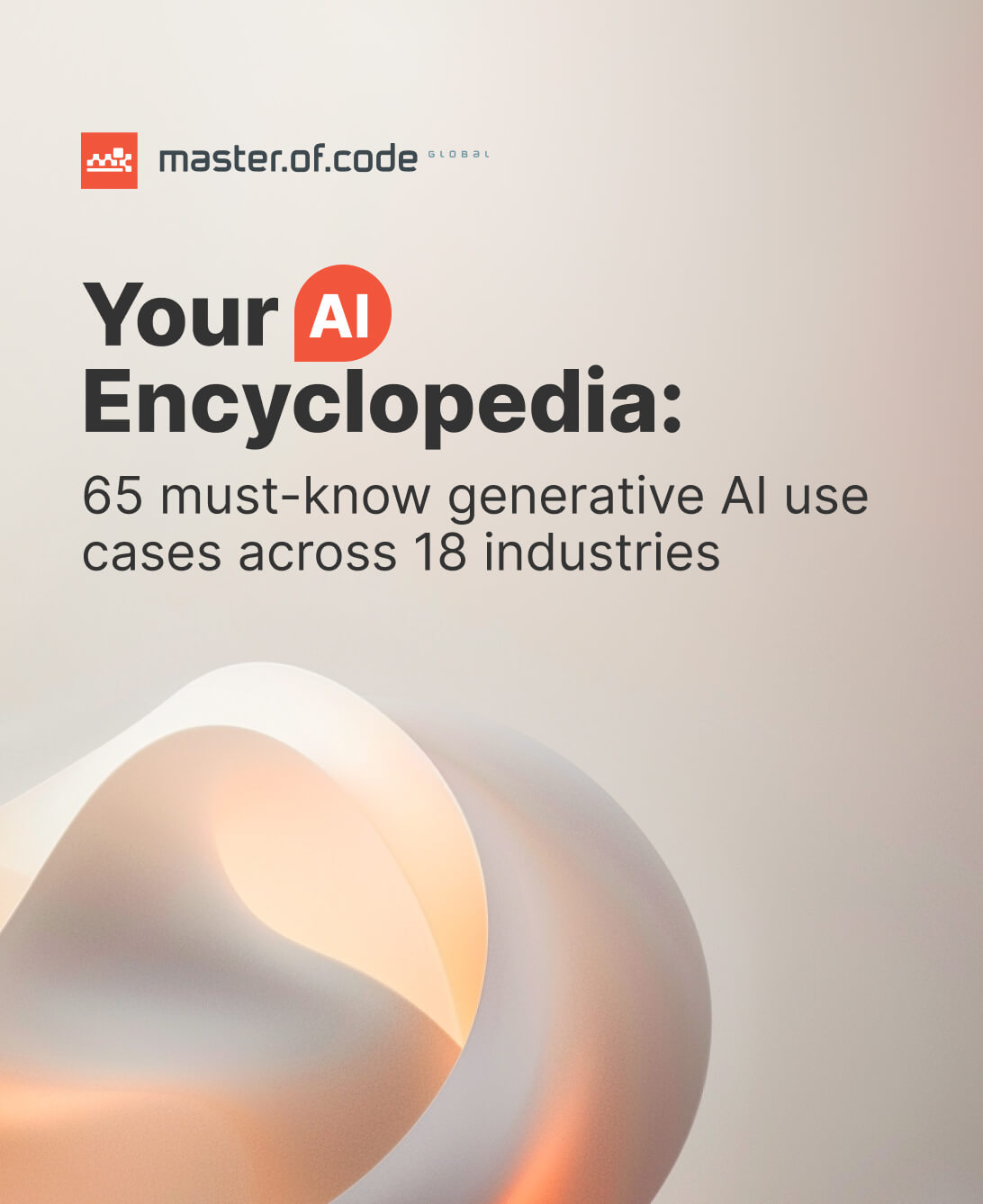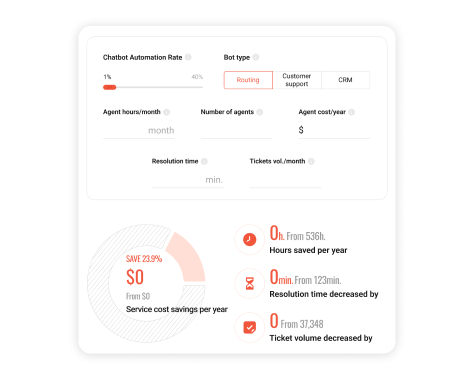As a Head of Digital Marketing with over 8 years of experience, I have a deep understanding of various channels, their unique values, and buyer needs. One approach I find essential for brands is the use of social media chatbots, which I believe are crucial for several key reasons.
Firstly, modern consumers prefer obtaining information via online media networks over traditional methods like phone calls. Platforms such as Instagram Direct or Facebook Messenger, are now preferred touchpoints for product and service inquiries.
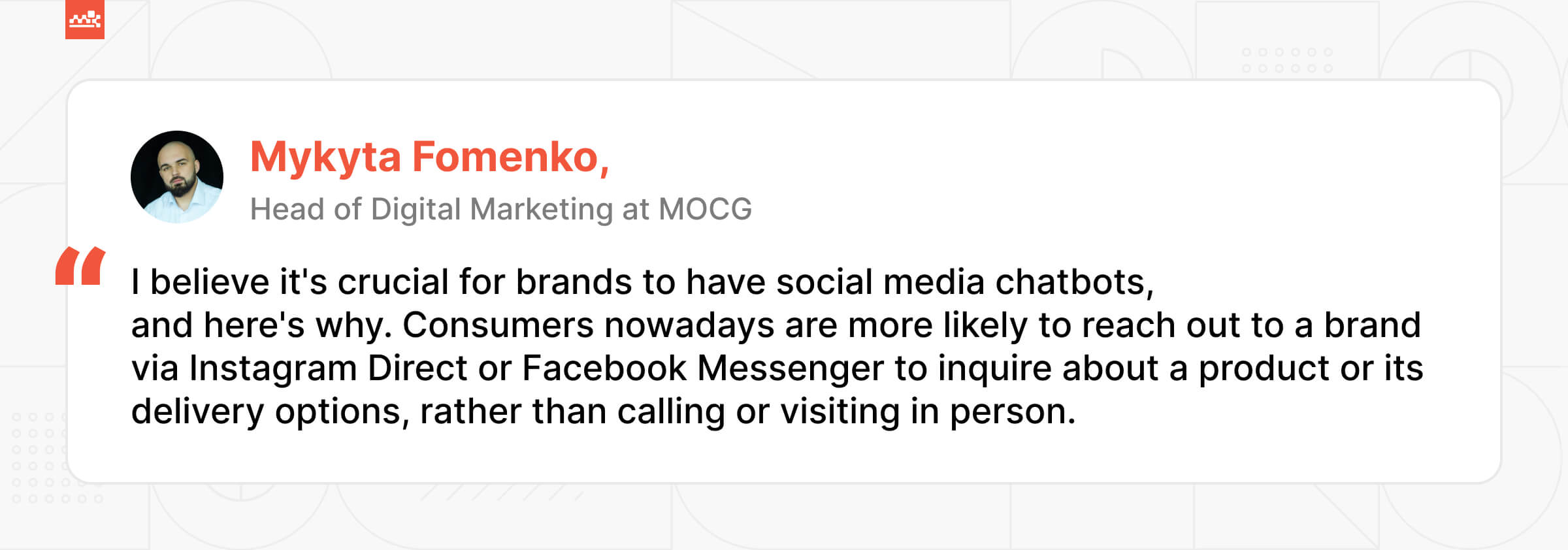
Secondly, bots provide continuous assistance beyond typical business hours, unlike human-operated technical support. They ensure uninterrupted client care and eliminate errors and delays.
Lastly, the advanced capabilities of digital assistants are significant. They can analyze more data than humans and offer tailored suggestions based on a user’s previous interactions. Such a predictive ability enhances personalization and relevance in responses.
In summary, the incorporation of AI-powered chatbots in social media is becoming increasingly important for providing efficient, round-the-clock, and tailored customer service. With this in mind, I’ve prepared this comprehensive article as a guideline for businesses to maximize the benefits of conversational agents. Explore these practical strategies to enhance your brand visibility and stay competitive in the digital era.
Ready to revolutionize your communication strategy? Embrace the power of an AI-powered social media chatbot and watch your business thrive. Start crafting your assistant now and elevate your services to new heights!
GET IN TOUCH
Table of Contents
What is a Chatbot for Social Media?
First, let’s clarify what we mean by a social media chatbot. It can be defined as an automated, AI-driven messaging tool integrated into various platforms. It functions through sophisticated algorithms, analyzing and responding to user messages. AI and natural language processing enable bots to understand and mimic human conversation. This technology interprets client intents, allowing the bot to provide relevant information.
As part of conversational marketing, these AI-powered chatbots also adapt to customer behaviors, personalizing interactions. In addition, they automate responses and handle multiple inquiries simultaneously. Such efficiency enhances user experience and allows businesses to focus on complex tasks. This way companies ensure a more dynamic and interactive social media presence.
7 Reasons Social Media Chatbots Are Helpful for Your Business Strategy
As we delve deeper into the impact of digital assistants launched on social networks, let’s focus on the seven most significant advantages they present to brands.
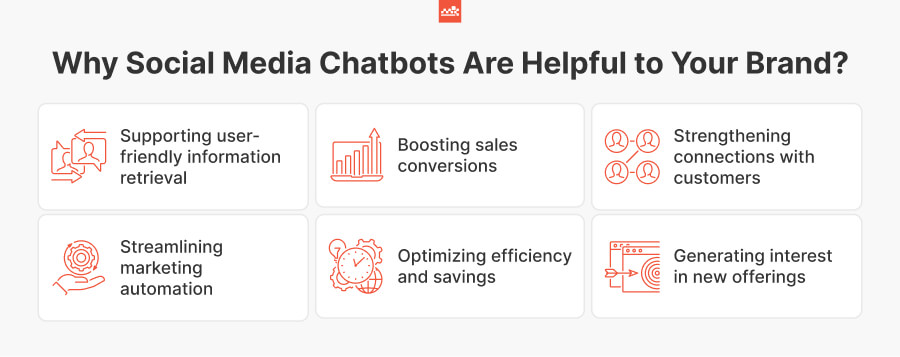
- Unified multi-platform journey. AI assistants ensure a consistent and cohesive experience across different digital channels. This uniform interaction across media enhances the overall brand perception and bond with customers.
- Quick and user-friendly information retrieval. Conversational systems streamline the process of finding data. They provide instant, direct access to essential facts. This enhances the client experience by simplifying and accelerating searches.
- Boosting sales conversions. Social media chatbots are instrumental in guiding consumers toward making purchase decisions. They personalize the shopping journey, reducing cart abandonment. Thereby conversational solutions increase the likelihood of a sale.
- Client engagement in their space. By engaging users on their preferred platforms, customer service chatbots foster stronger loyalty. They resonate with online habits, creating interactive and relatable experiences. Thus, bots can keep shoppers engaged and connected to the brand.
- Streamlined marketing automation. Digital assistants automate routine activities, enhancing the effectiveness of outreach campaigns. They provide targeted content delivery, ensuring that the team’s efforts are more relevant and impactful.
- Optimizing efficiency and savings. Implementing social media chatbots leads to more productive operations. They handle repetitive tasks and save valuable time. This optimization translates into less expenses for the business. As a result, resources are allocated to more strategic areas.
- Generating interest in new offerings. Chatbots for social media play a key role in interactively introducing new products. They offer customized recommendations, drawing attention to the latest items and encouraging exploration.
Now, let’s review examples of how these advantages manifest in actual business use cases.
Easy Ways Social Media Chatbots Can Work for Your Brand
In my view, the standout functions of digital assistants are managing everyday inquiries and simplifying online shopping. Such tools tackle routine questions efficiently, thereby reducing the workload. They also play a key role in eCommerce, leading users smoothly from selecting products to making payments, all within the social media ecosystem.
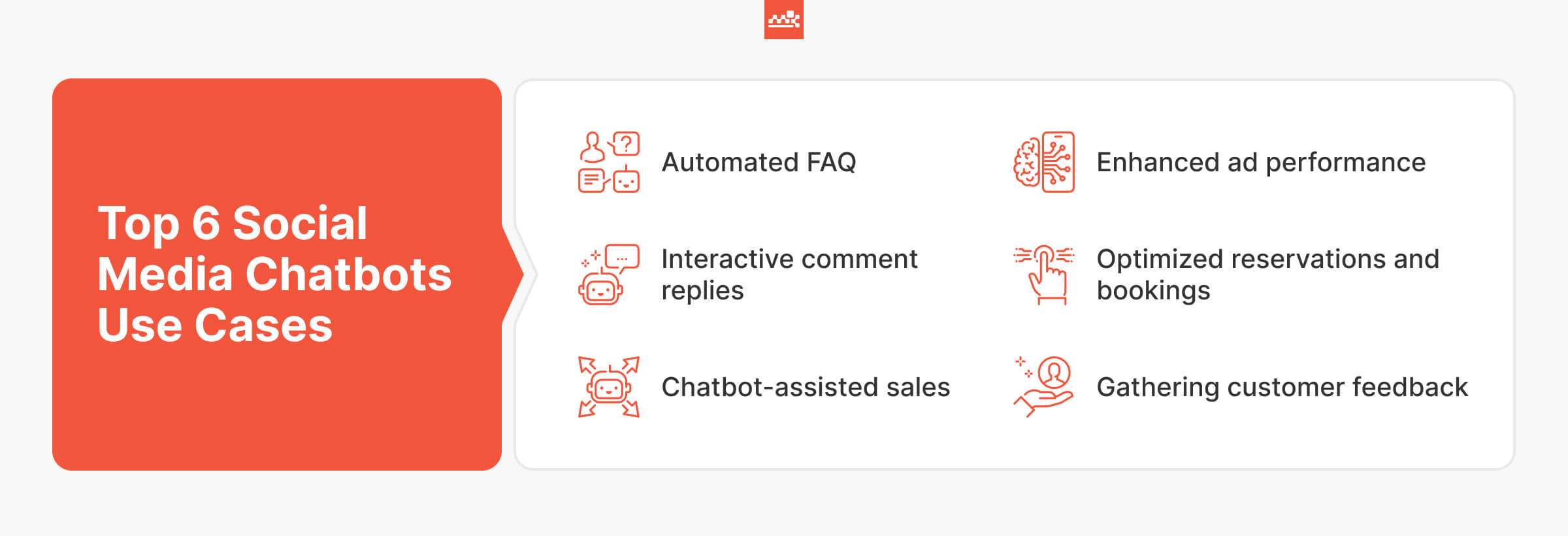
Furthermore, the scope of conversational agents extends beyond these areas, as we’ll see in the following scenarios.
Enhanced Ad Performance
A chatbot for marketing used on social media platforms can significantly elevate ad campaign effectiveness. By interacting with users who engage with ads, conversational systems capture and qualify leads. They provide instant responses to ad-related queries, maintaining consumer interest and engagement. This targeted interaction ensures higher conversion rates from ad viewers to potential customers.
Optimized Reservations and Bookings
Social media chatbots offer efficient and automated booking solutions. They quickly manage reservations, significantly enhancing user convenience and satisfaction. With their help, companies also reduce manual workload by automating schedule administration. Chat assistants’ rapid response capabilities ensure a smoother experience for both the business and the client.
Automated FAQ
A chatbot for social media efficiently handles routine inquiries, providing instant responses. It reduces workload by answering common questions around the clock. Tailoring outputs, the bot ensures accurate and helpful information delivery. This automation enhances user experience, increasing customer engagement and satisfaction.
Interactive Comment Replies
A social media chatbot actively engages in conversations, enhancing user interactions. By quickly addressing queries in the comments, brands heighten client engagement and elevate their digital presence. Such automation adds a personal touch to the company’s responses, ensuring that each customer feels acknowledged and important. The bot’s capacity to interact within comment sections helps in fostering a vibrant and engaged online community.
Chatbot-Assisted Sales
Conversational agents enhance the customer journey by guiding users to suitable products. They interactively identify buyer needs, effectively aiding in product selection. This targeted approach significantly improves lead generation and nurtures prospects into buyers. Bots’ role in facilitating quick and informed decisions elevates overall sales performance.
Gathering Customer Feedback
Conversational agents play a key role in amassing consumer reviews, thus contributing to the enhancement of services. Post-interaction, these tools actively seek users’ opinions, accumulating essential insights. This method of immediate data gathering is crucial for making timely business modifications. In essence, such bots establish an ongoing cycle of feedback that is integral to fostering customer-focused improvements.
Examples of How Real Businesses Employ Social Media Chatbots
Following our discussion of the essential use cases, it’s time to explore how these are realized in practical, real-life applications.
At Master of Code, we developed a conversational system for Luxury Escapes, a leading name in the travel industry. The focus was to boost their customer engagement, moving beyond traditional marketing channels. Our Facebook Messenger Chatbot streamlined the process of finding and booking luxury trip deals.
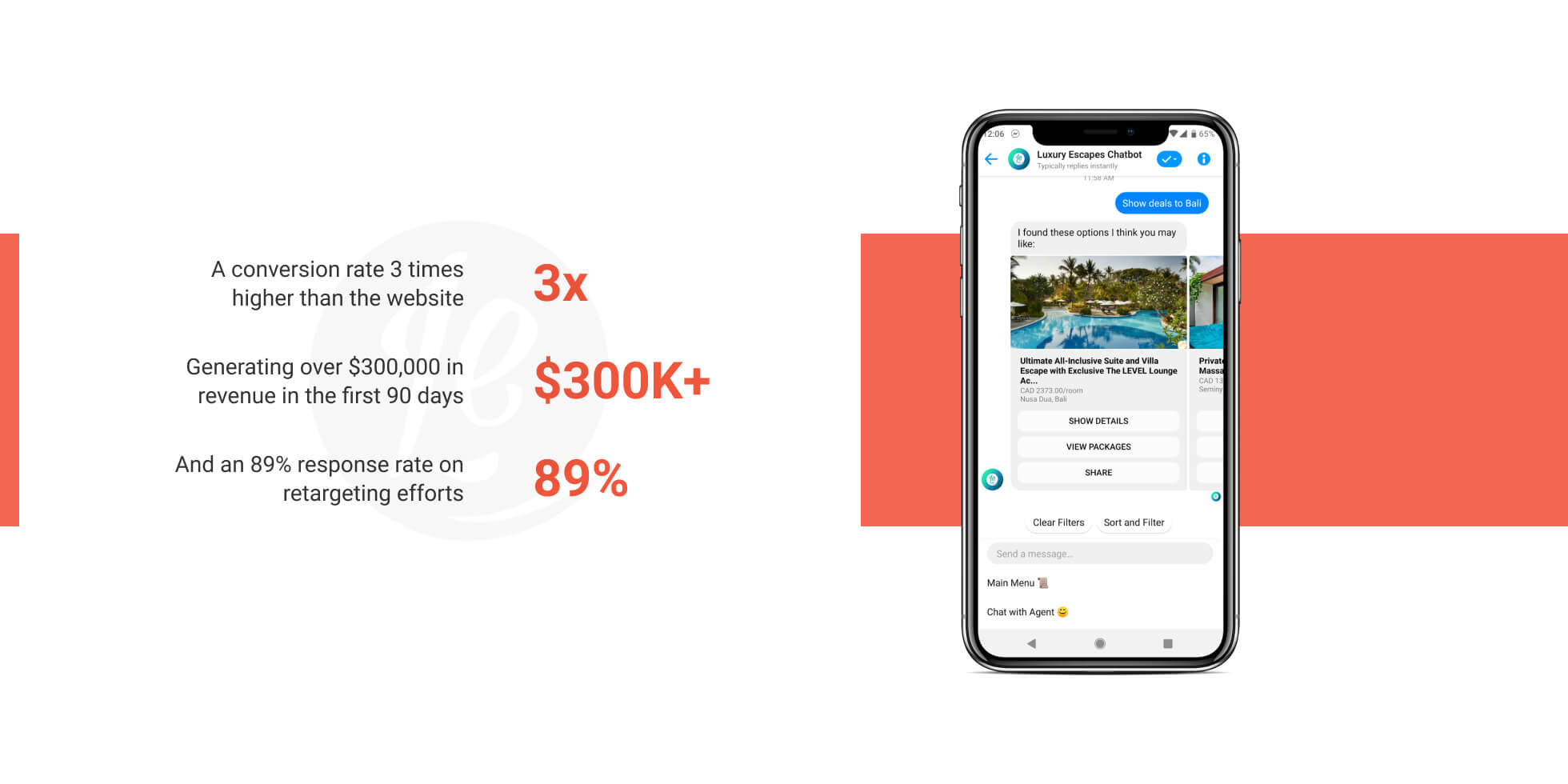
The assistant outperformed the website, achieving conversion three times higher. In just 90 days, it generated over $300,000 in sales revenue. Moreover, the Facebook chatbot achieved an 89% reply rate, marking a significant advancement in engaging clients with personalized travel experiences.
Pizza Hut
Pizza Hut introduced a Twitter chatbot to compete with Domino’s, enabling orders via social media. The bot streamlined the placement process. It offered an intuitive and modern approach for an enhanced customer experience. This strategy made the buyer’s journey more convenient and user-friendly through familiar digital platforms.
Make Up For Ever used an Instagram chatbot as a part of their digital marketing strategy. By deploying the tool for a period of six months, they achieved a notable 20% increase in online sales. Additionally, the bot excelled in personalizing product recommendations, leading to an impressive 30% conversion rate.
BMW introduced a WhatsApp chatbot to enhance the DTM (Deutsche Tourenwagen Masters) experience for fans. This bot focused on the company’s team and drivers, offering race results, schedules, and statistics. It also provided insights into BMW’s M4 DTM car and the sports history of the brand. The tool offered assistance in English and German, supporting business-to-customer interactions in a convenient digital format.
Tinder
For Valentine’s Day, Domino’s teamed up with Tinder, introducing a social media chatbot named ‘Dom Juan’ as an ordinary profile. This creative interaction provided users with playful chat-up lines, cleverly leveraging the platform’s popularity during the romantic season.
The initiative significantly elevated Domino’s brand visibility and customer engagement. Notably, it yielded a 35x return on advertising spend and a 10% increase in year-over-year sales. Additionally, the campaign made a remarkable impact on Tinder, garnering over 2 million impressions.
Simple Tricks for Bringing the Most out of Your Social Media Chatbot
Combining my insights in digital marketing with the specialized knowledge of Master of Code Global in AI chatbot solutions, I’ve crafted a list of strategic recommendations. By following these steps, you’ll maximize the effectiveness of conversational agents in diverse channels, ensuring both efficiency and risk reduction.
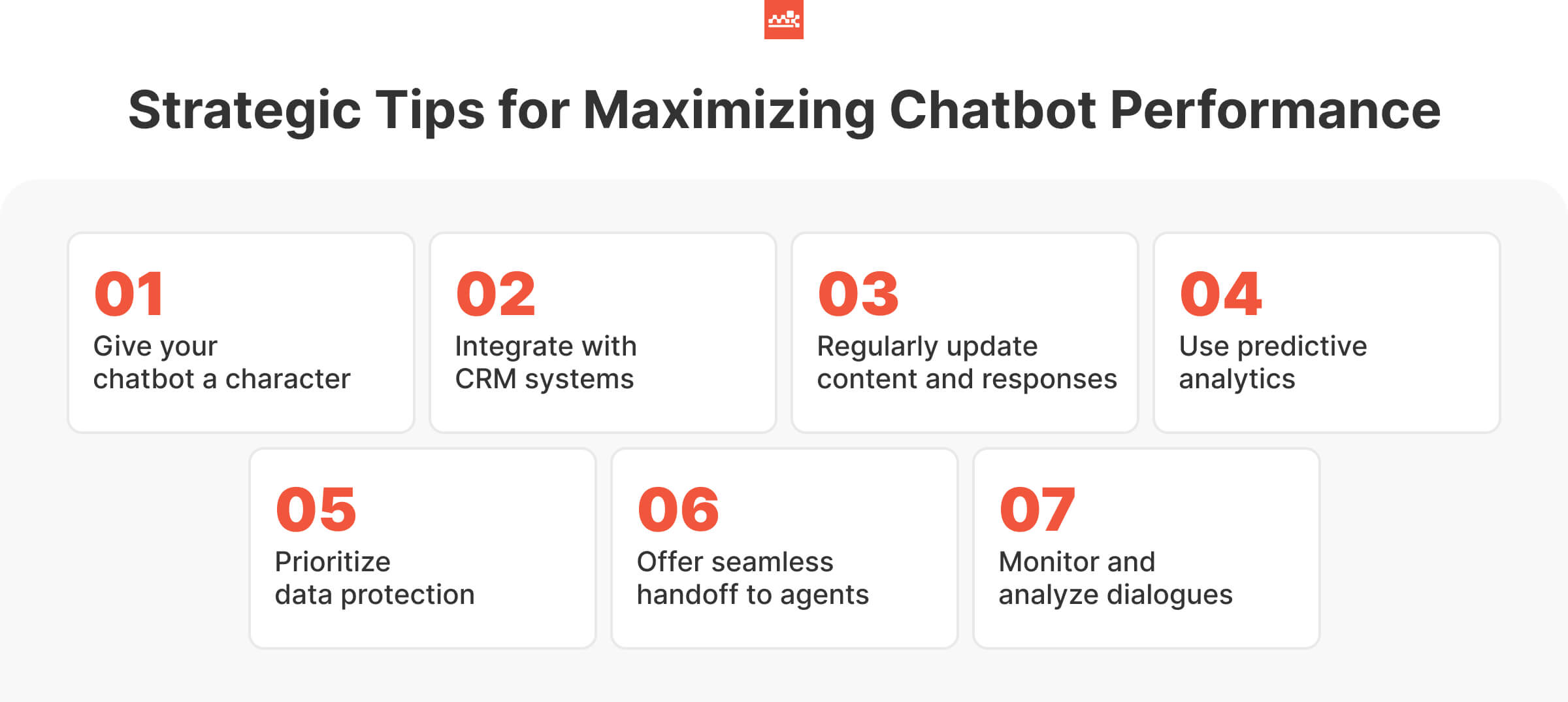
- Give your social media chatbot a character. Creating a unique persona for your bot enhances brand recognition. Plus, a distinctive personality adds a human touch, making conversations more engaging and memorable for users.
- Integrate with CRM systems. Linking your chat assistant with client relationship management tools streamlines data administration. It enables more personalized interactions, enhancing the customer experience through tailored replies and suggestions.
- Regularly update content and responses. To maintain relevance and accuracy, it’s essential to keep the agent’s knowledge base up-to-date. Regular updates ensure that the bot provides the most current and useful information.
- Use predictive analytics. Implementing AI and forecasting algorithms allows the AI-powered chatbot for social media to anticipate buyer needs. This proactive approach can suggest solutions before the consumer even asks, improving the overall digital journey.
- Secure conversations with robust privacy measures. Incorporating strong security protocols into your conversational system is key to protecting user data and building client trust. The business guarantees that all communication and shared information remain confidential and protected.
- Offer seamless handoff to agents. When a query becomes too complex for the bot, an easy transition to human support is essential. The mechanism ensures that customers always receive the help they need without frustration.
- Monitor and analyze dialogues. By analyzing social media chatbot interactions, you can gain insights into customer preferences and behavior. With continuous assessment, companies succeed in refining the tool’s responses and communication strategies.
Future of Social Media Chatbots
Looking toward the future, I see digital assistants evolving significantly in their ability to personalize communication. They will become adept at gathering and analyzing data from various sources. Furthermore, bots won’t be limited to interactions within a single platform. For example, they might monitor a user’s browsing habits, content engagement, and subtle aspects of their behavior across media channels.
This will allow conversational agents to offer highly relevant suggestions. Their success will hinge on integrating diverse datasets to craft experiences unique to each client. As a result, businesses will boost the effectiveness of their marketing strategies. Moreover, the future, as I picture it, holds a greater expansion of digital assistants, moving beyond mere novelty to become a must-have tool.
My colleague, a content lead, shares a similar yet distinct outlook. In her view, the tomorrow of social media chatbots is set for a more conscious evolution.
Check out your potential cost savings by implementing a chatbot solution for customer supportCalculate ROI
She stated that: “Currently, many companies implement bots on platforms like Facebook and Instagram, mainly to handle FAQs. However, very few enterprises are deploying AI-driven assistants, often not seeing their social media as a separate sales channel. I believe the future lies in online networking platforms becoming a more crucial distribution avenue for numerous firms, particularly in retail, where instant sales can be made directly through these mediums.”
She also anticipates that more sectors will reap benefits from AI’s adaptability. In real estate, for example, a chatbot combined with a generative component could visualize buyer queries by generating images based on inputs. Such an approach aids agents by providing a clear understanding of what the customer is looking for.
Thus, we see a future where more industries will view their digital platforms not just for branding, but as a channel for sales and consumer interaction. Properly implemented AI assistants position a brand as a market leader, especially since currently few companies are using them effectively and purposefully.
Are you still weighing the advantages of a social media chatbot for your business? Try our ROI Calculator to assess the potential returns and decide whether this technology merits your investment.
Discover how Master of Code Global can help boost your client’s experience and achieve three times higher conversion rates with the help of a social media chatbot.


